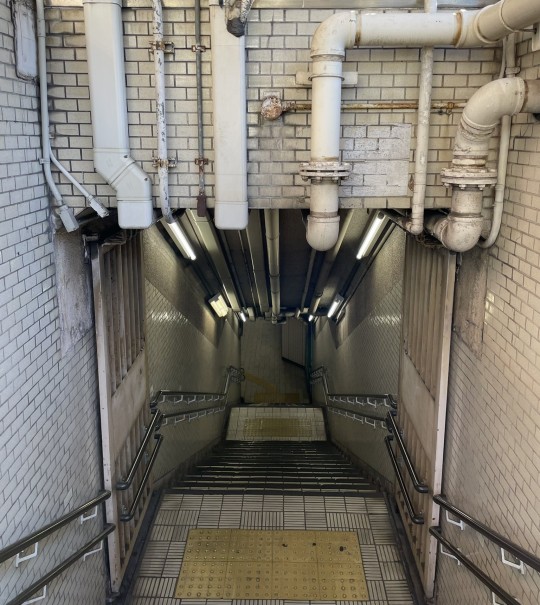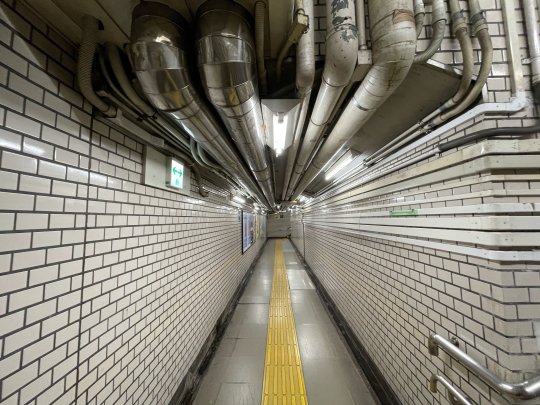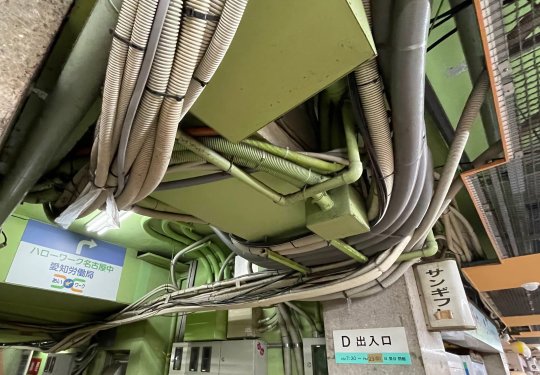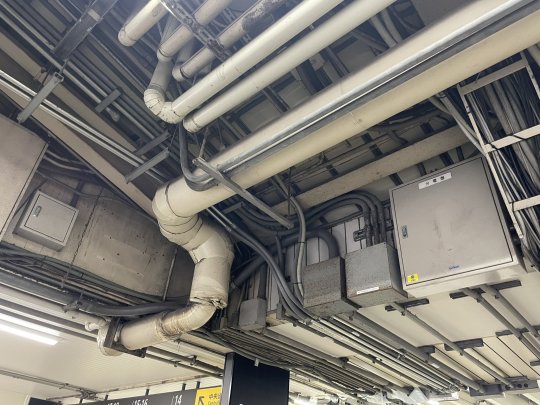#Pipe design
Text
Comprehensive Seismic Engineering Design Services Offered by Little P.Eng. and its Importance in Piping Stress Analysis
In the world of engineering and construction, seismic engineering is a specialized field crucial for ensuring the safety and resilience of structures in earthquake-prone regions. Little P.Eng. is a renowned seismic engineering firm that provides a wide range of services to address the unique challenges posed by seismic activity. In this comprehensive article, we will explore the multitude of services offered by Little P.Eng., highlighting their expertise, innovation, and dedication to creating structures that can withstand the forces of nature.
Seismic Risk Assessment
One of the foundational services offered by Little P.Eng. is seismic risk assessment. Before embarking on any seismic engineering project, it's essential to understand the level of risk posed by potential earthquakes in a specific area. Little P.Eng. utilizes advanced methodologies and data analysis to assess seismic hazards accurately. This assessment helps clients make informed decisions about construction and retrofitting, ensuring the safety of occupants and the protection of valuable assets.
Structural Analysis and Design
Seismic engineering begins with the structural analysis and design of buildings and infrastructure. Little P.Eng.'s team of experienced engineers specializes in developing seismic-resistant structural systems. They work closely with architects, builders, and developers to create designs that can withstand seismic forces, ensuring structural integrity and occupant safety during earthquakes.
Retrofitting Existing Structures
In regions with older buildings, retrofitting is often necessary to bring them up to current seismic safety standards. Little P.Eng. offers retrofitting services that involve the modification and strengthening of existing structures. Their engineers assess the specific needs of each building, considering factors such as its age, construction materials, and seismic vulnerabilities. They then implement retrofitting strategies that enhance the building's earthquake resistance, preserving its historical value while ensuring safety.
Foundation Design and Soil Analysis
The foundation is the bedrock of any structure's stability during an earthquake. Little P.Eng. conducts in-depth soil analysis to understand the geotechnical characteristics of the site. Based on this analysis, they design and recommend appropriate foundation systems tailored to the specific needs of the project. Their expertise in foundation design ensures that structures can effectively dissipate seismic forces into the ground, preventing catastrophic failure.
Compliance with Seismic Codes
Adherence to seismic codes and standards is paramount in seismic engineering. Little P.Eng. has an in-depth understanding of local, national, and international building codes related to earthquake-resistant construction. They ensure that all their designs and retrofitting projects comply with these regulations, providing clients with peace of mind that their structures meet the highest safety standards.
Advanced Computer Modeling and Simulation
Little P.Eng. leverages cutting-edge computer modeling and simulation tools to analyze and predict how structures will respond to seismic forces. These simulations allow for precise refinement of designs and provide valuable insights into structural performance during earthquakes. By simulating a wide range of seismic scenarios, engineers can optimize designs for maximum safety and efficiency.
Continuous Monitoring and Evaluation
The commitment of Little P.Eng. extends beyond the design and construction phase. They recommend and implement structural health monitoring systems that allow for real-time assessment of a building's integrity. Continuous monitoring enables early detection of potential issues, ensuring prompt maintenance or repairs to preserve structural stability.
Research and Innovation
Innovation is at the heart of Little P.Eng.'s approach to seismic engineering. Their team actively engages in research and development to push the boundaries of seismic-resistant technologies and construction practices. They explore innovative materials, construction techniques, and design methodologies to advance the field and provide clients with the latest and most effective solutions.
Emergency Response Planning
In addition to structural engineering services, Little P.Eng. assists communities, businesses, and organizations in developing emergency response plans for seismic events. They collaborate with stakeholders to create comprehensive strategies for minimizing risks, protecting lives, and reducing damage during earthquakes.
Public Education and Outreach
Little P.Eng. recognizes the importance of public awareness and education regarding seismic risks and safety. They engage in outreach programs to educate communities on earthquake preparedness, emergency response, and the importance of seismic-resistant construction.
Conclusion

Seismic engineering design plays a crucial role in piping stress analysis within industrial facilities, especially in regions prone to earthquakes. Piping stress analysis involves evaluating the forces and stresses that piping systems experience during various operational conditions, including seismic events.
Here's how seismic engineering design is important for piping stress analysis:
Safety and Structural Integrity: Seismic engineering design ensures that the entire facility, including piping systems, is built to withstand the forces generated by earthquakes. The structural integrity of piping systems is paramount for preventing leaks, ruptures, or catastrophic failures during seismic events. Piping stress analysis assesses the impact of seismic forces on the pipes, supports, and attachments to verify that they can withstand the dynamic loads and deformations caused by earthquakes.
Compliance with Building Codes: Piping systems within industrial facilities must adhere to building codes and standards related to earthquake-resistant design. Seismic engineering design ensures that piping systems are compliant with these codes. Non-compliance can lead to costly retrofitting efforts or, in the worst-case scenario, dangerous failures during an earthquake.
Identifying Vulnerabilities: Seismic engineering design involves conducting a seismic risk assessment for the facility. This assessment helps identify vulnerabilities in the piping systems, such as weak points in support structures or connections that may be prone to failure during seismic events. Piping stress analysis considers these vulnerabilities and recommends improvements to enhance seismic resilience.
Optimal Pipe Routing and Support: Piping stress analysis incorporates considerations for seismic forces when determining the routing of pipes and the design of pipe supports. Proper pipe routing and support are essential to prevent excessive stresses, vibrations, and displacements during an earthquake. Seismic engineering design helps optimize these factors to minimize potential damage to the piping systems.
Dynamic Load Analysis: Seismic events introduce dynamic loads on piping systems, which are significantly different from static loads. Piping stress analysis uses dynamic load analysis techniques to simulate the effects of seismic forces on pipes, fittings, and supports. This analysis ensures that the piping systems can handle the dynamic loads without exceeding their stress limits.
Retrofitting and Modifications: In existing facilities, seismic engineering design may involve retrofitting or modifying piping systems to meet current seismic standards. Piping stress analysis helps identify areas that require reinforcement, redesign, or additional support. Retrofitting ensures that older facilities can withstand seismic events and meet modern safety requirements.
Mitigation Strategies: Seismic engineering design doesn't only focus on evaluating existing conditions but also includes the development of mitigation strategies. These strategies may involve the use of seismic expansion joints, dampers, or flexible connectors to absorb seismic energy and reduce stress on the piping systems.
Emergency Response Planning: In the event of a seismic event, having a well-designed piping system is crucial for quick recovery and minimizing damage. Seismic engineering design contributes to emergency response planning by ensuring that piping systems are less likely to rupture or leak during an earthquake, reducing potential hazards and environmental damage.
In summary, seismic engineering design is vital for piping stress analysis because it ensures the safety, compliance, and resilience of piping systems in the face of seismic events. It helps identify vulnerabilities, optimize designs, and implement mitigation measures, ultimately safeguarding industrial facilities and the surrounding environment during earthquakes.
The listing below indicates a few of Meena Development’s most commonly served industries.
Steel and Metals Industry
Energy and Power Generation Industry
Water and Wastewater Industry
Oil & Gas Industry
Chemicals and Plastics Industry
Pulp & Paper Industry
Facility Services
Residential Buildings Sector
Hospitality and Hotel Sector
Commercial Buildings Sectors
Sports and Stadia Buildings Sector
Education Buildings Sector
Government Buildings Sector
Hospitals Engineering Services
Biotech / Pharmaceutical – Engineering Services
Food & Beverage – Engineering Services
Tags:
Meena Rezkallah
Little P.Eng.
piping stress analysis
Piping stress analysis
Structural analysis
Seismic engineering
Seismic risk assessment
Retrofitting
Foundation design
Compliance with seismic codes
Computer modeling
Advanced simulation
Optimal pipe routing
Support systems
Pipe design
Seismic forces
Seismic expansion joints
Flexible connectors
Engineering Services
Pipe Stress Analysis Services
Seismic Bracing Experts
Located in Calgary, Alberta; Vancouver, BC; Toronto, Ontario; Edmonton, Alberta; Houston Texas; Torrance, California; El Segundo, CA; Manhattan Beach, CA; Concord, CA; We offer our engineering consultancy services across Canada and United States. Meena Rezkallah.
#•#Meena Rezkallah#Little P.Eng.#piping stress analysis#Piping stress analysis#Structural analysis#Seismic engineering#Seismic risk assessment#Retrofitting#Foundation design#Compliance with seismic codes#Computer modeling#Advanced simulation#Optimal pipe routing#Support systems#Pipe design#Seismic forces#Seismic expansion joints#Flexible connectors
0 notes
Text
Plumbing systems are the backbone of any structure, providing essential services such as clean water supply and efficient wastewater disposal. At the heart of these systems lies a critical component: plumbing joints.
These unassuming connectors play a pivotal role in ensuring the seamless flow of fluids from one point to another. In this comprehensive guide, we will delve deep into the world of plumbing joints, exploring 11 distinct types, their diverse applications, advantages, disadvantages, and the intricate processes involved in their installation.
Plumbing Joints Unveiled
A plumbing joint, also known as a pipe joint or fitting, serves as the essential link between pipes, enabling the movement of liquids and gases within a plumbing system. Think of it as the puzzle piece that ensures everything fits together and functions smoothly.
However, not all joints are created equal, and understanding the nuances of each type is crucial for constructing leak-free and efficient plumbing systems, tailored to the unique demands of different settings.
1. Soldered Joint
The Process: The soldered joint, often referred to as a sweated joint, is a widely used method for connecting copper pipes. The process involves meticulous preparation, including cleaning the pipe surfaces to remove oxidation. Next, a special flux is applied to prevent further oxidation during the heating process. The joint is then heated using a torch, and once the pipe reaches the appropriate temperature, molten solder is introduced at the junction. As it cools, the solder solidifies, creating a reliable seal.
Advantages:
A. Watertight Seal: The soldered joint offers a secure, leak-resistant connection, ensuring an uninterrupted flow of fluids.
B. Potable Water Compatibility: It is an ideal choice for systems carrying drinking water, as it does not introduce contaminants.
C. Smooth Flow: The seamless internal surface of the joint minimizes restrictions to fluid movement, preventing blockages.
Disadvantages:
A. Skill Dependency: Proper installation demands skilled craftsmanship to ensure a leak-free joint. Improper soldering can lead to leaks and compromised structural integrity.
B. Heat Concerns: The heat involved in soldering can potentially harm surrounding materials and finishes, necessitating caution during installation.
C. Material Limitation: Soldering is not suitable for plastic pipes due to their sensitivity to heat.
Read more
1 note
·
View note
Text

you better not be freeing your mind at night
#my art#furry#fursona#anthro#oc#a critter#a creature#tenatively calling it#oc: meadow#this is a combination of all my main sonas (tilly milo and cow) and its just kinda a dragon creature thing#gonna have fun with its design and make it SUPER fluid like#what if i ACTUALLY leaned fully into the shapeshifter thing for once#:3#anyways#a doodlie#im doing commissions today and almost forgot to post this in the throughs (throwes? ?) of puppy dog drawings#weed#smoking#pipe
1K notes
·
View notes
Text

quick magnus protocol character designs because babygirl i am ready to go FERAL again. in order: alice, lena, sam, colin and gwen
#the magnus protocol#the magnus archives#tmagp#tma#making my gwen as Friend as possible so it’s even more fun when she inevitably pipe murders someone#alice dyer#lena kelley#samama khalid#colin becher#gwendolyn bouchard#tmagp fanart#my art#the magnus protocol art#character designs#illustration#radarpls
441 notes
·
View notes
Text

I like to think that Elias is boring on purpose. he spends his time and effort when he should be working on boring his employees instead. he's perfected it to an art. every day, he visits each department and tries to find the time to talk about spreadsheets whenever there's the most people in one room at a time. then he tallies up how many of them visibly and/or audibly react with some form of disgust, and compares it with other days. he'd have realised how sad that really is if he hadn't been found out, but at least now he gets to be as deranged as humanly possible. you go, Elias. I love you you stinky rat whore, can't wait for you to show up in the new protocol episode <3
#the magnus protocol#tmagp#elias bouchard#elias tma#jonah magnus#tma spoilers#art#character design#character art#whoever said elias is creepy from the beginning is dead wrong#because i didn't think he was a bad guy until he bashed a sad hobo's brains in with a metal pipe#and i literally SAW the wiki that said he was an antagonist#i just thought he'd be a little antagonistic#because of how he refused to believe his employees when they said they were being targeted by a worm woman#and by how utterly boring he was#the magnus archives#magnus archives#magnus archive fanart#tma fanart
358 notes
·
View notes
Text

arti design :) still playing thru her campaign (in metropolis, in the or almost at the house of braids or whatever i think ) she is the only one i haven’t beaten cuz the scavs are beating my ass but it’s ok we soldier on
i do love arti… god forbid women have hobbies
#artificer#the artificer#the artificer rain world#arti rainworld#the artificer rainworld#artificer rw#rw#rain world fanart#rain world design#was trying to go with a volcano or exhaust pipe-y vibe#digital art#artblr#rain world downpour#rain world#rainworld#rw downpour#rainworld downpour#i am so sorry j realised i just repeated myself in the tags and the desc i am up past my bed time ok </3
503 notes
·
View notes
Text

House Beautiful Weekend Homes, 1990
#vintage#vintage interior#1990s#90s#interior design#home decor#deck#dining room#al fresco#pvc pipe#furniture#ocean#beach house#modern#style#home#architecture
641 notes
·
View notes
Text


Testing gouache with everyone’s fav character 💕💕💕
#ive been having a lot of tma thoughts lately#and people wont stop reblogging my brutal pipe murder post#EVEN THO THE DAY HAS PASSED#the magnus protocol#the magnus archives#tma podcast#tma#tma fanart#jonathan sims#jon sims#gouache#painting#character design#the magnus archive fanart#tma art#ceaseless watcher#tma fears
239 notes
·
View notes
Text

Patia Por’co, Keeper of Scrolls
#critical role#exu calamity#patia por'co#criticalrolefanart#ring of brass#exandria unlimited#ukiyo e style#my art#critrole art#I just feel like Patia would 100% have a pipe filled with sumpin#please check out Hannah Freiderichs’ amazing original character designs for Calamity#critical role art#marisha ray
352 notes
·
View notes
Text



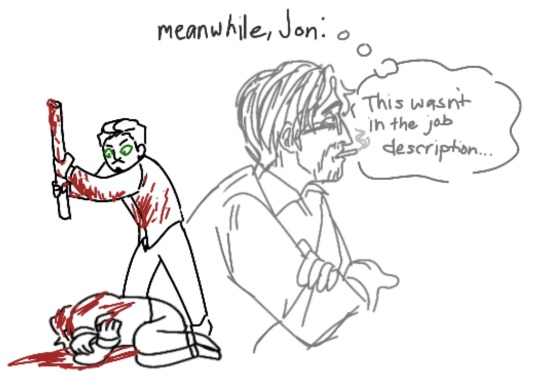
#the magnus archive fanart#the magnus archives#tma podcast#jonathan sims#fanart#jon sims#martin blackwood#jonmartin#jmart#i cant do full art yet:(#im working on my martin design#me and jon are biace:D#elias bouchard#brutal pipe murder#jurgen leitner
103 notes
·
View notes
Text

pipe organ oc
#my oc#he doesnt have a name yet ehhhh ill add it l8r#pipe organ#church organ#character design#gothic#baroque
195 notes
·
View notes
Text


Decided to toss my hat into the Wapeach Redesign Ring LMAO
I do think her normal design is cute I just think she looks too much like Rosalina (though to be fair, she was likely designed first and elements of her design might've been incorporated into Rosalina's...)
Actually in retrospect I probably should've switched the direction of her bangs to differentiate them more... dangit
also yknow how Mario & Luigi are contrasting colours? Well, I noticed this about the "Princess" gang if you add Wapeach to the mix

#wapeach#walupeach#super mario#mario tennis#mario bros#princess peach#princess daisy#princess rosalina#redesign#character redesign#part of her 'redesign' is just me shoving in a bunch of my personal character design preferences to be honest LOL#plus since in mario tennis all the girls wear different outfits its likely she wouldn't wear that outfit if she showed up outside of tennis#i'm one of the people who think her name should be plum btw#kinda hoping she'll manage to pull a linkle and become official but i know thats a pipe dream#personally I think peach would like her a lot. in the way you think a misbehaving kitten is cute#i have an alt design where she keeps the hood but she doesn't have a hole cut into the back of it for her hair to pop out#because i think that looks stupid
133 notes
·
View notes
Text
Today I found a good video about merging tubes with different angles, ellipses, phase shift of sine waves, featuring sculptures by Frank Smullin.
This video is exceptionally comprehensive.

[Shared by hardm.ix on instagram: Text says: "A little more on the analytic constructivist sculpture of Frank Smullin, a professor of mine at Duke University who combined art and engineering in a way that reminded me a little of Kenneth Snelson and Tensegrity or Buckminster Fuller and geodesic domes."]
171 notes
·
View notes
Text
I’m catching up on Re:Dracula and listening to the sound design roundtable from back in July and I just found it funny how Tal said they wound up using a sword effect for the shovel smack effect
because
most of the time when I’m doing sword effects in Starfall, I use shovel effects
#like the kind of weight you get from shovels and pipes#works sooooo much better for the kind of sword leona has#it just works great as a sound design lesson#nothing sounds like it’s supposed to
117 notes
·
View notes

